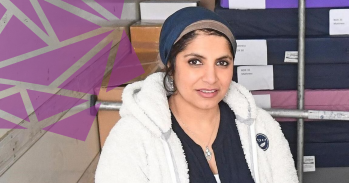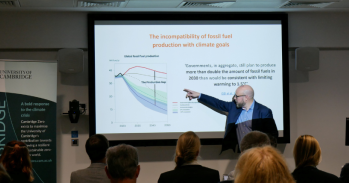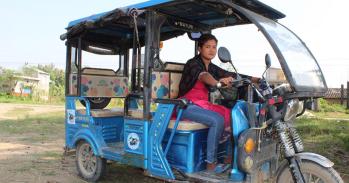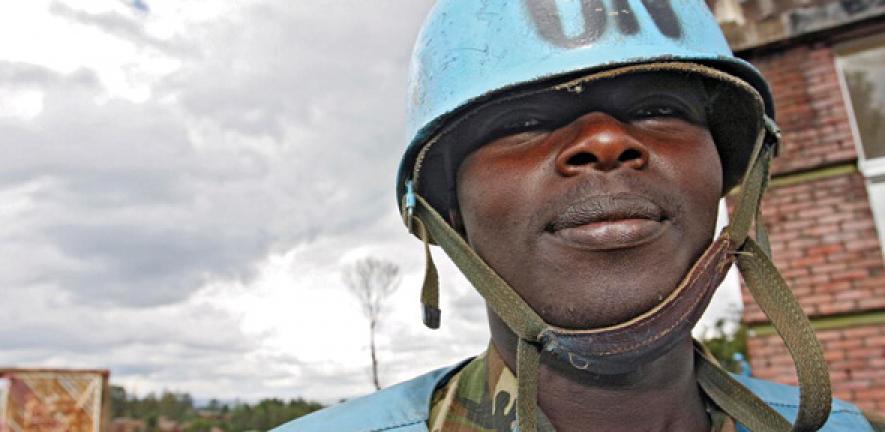
Research by an expert in peacebuilding shows how international ideas, practices and language of conflict resolution are transformed when they meet African “realities and politics on the ground”.
Research by an expert in peacebuilding shows how international ideas, practices and language of conflict resolution are transformed when they meet African “realities and politics on the ground”.
Everybody’s manoeuvering. These international ideas and labels are not imposed on a blank slate, but are forced to interact with existing political and economic agendas.
Devon Curtis
Burundi has experienced cycles of violence, civil war and even genocide since achieving independence from Belgium in 1962. So, when this small central African country finally held democratic multiparty elections in 2005 following a lengthy peace process, the international community cheered.
Here, perhaps, was a nation set to become a model for post-conflict inclusive governance. A model for building peace.
Now, Burundi once again teeters on the brink. In 2015, President Nkurunziza refused to step down at the end of his term, violating the new constitution and leading to a failed coup attempt – the aftermath of which has seen violent repression of the population.
Hundreds of thousands have fled, including much of civil society and a once-flourishing media. Torture, rape, imprisonment and extrajudicial killings are now commonplace, and in July 2016 the United Nations (UN) Security Council strongly urged all parties to cease and reject violence. The language of ethnic difference and the politics of ethnic scapegoating are once again coming to the fore, and tensions are extremely high.
For regional and international actors, such as the African Union (AU) and UN, which played key roles in the peace initiatives that paved the way for the 2005 elections, come familiar questions: what went wrong, and what to do now?
Through hundreds of interviews with everyone from government officials to local activists, AU and UN representatives, ex-combatants and aid workers, Dr Devon Curtis from Cambridge's Centre of African Studies (see panel below) is exploring what happens when the lofty ambitions of peace programmes – the language of security and democracy – encounter, as she says, “African realities and politics on the ground”.
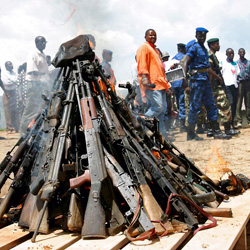
“Before I became an academic I worked with government and the UN and it was almost easier then to provide policy recommendations in broad bullet points. It’s not so easy now that I have a real sense of the complexities of a country like Burundi, based on extensive research,” says Curtis.
Her research, in collaboration with UK and African-based scholars, is revealing the myriad ways international peacebuilding is reinterpreted and distorted by the politics of post-conflict African countries.
“Various local groups attract attention, funds or delegitimise opponents by manipulating – or ‘instrumentalising’ – the simplistic categories set by international donor organisations,” she says. “This can lead to unintended consequences for international agencies.”
For instance, disarmament, demobilization and reintegration (DDR) of ex-combatants has become an integral part of international peace operations over the past 20 years and a key area of programmatic activity, yet even the very category of ‘combatant’ in DDR programmes is problematic.
“The international distinction between combatant and civilian doesn’t make much sense in Burundi, where many people have been both at different times. In fact, armed movements used DDR programmes as the basis for recruitment drives – promising potential recruits ‘attractive demobilisation packages’ from international donors.”
In other cases, international actors keen to see regional stability and cessation of overt violence can be “instrumentalised” by a country’s ruling elites, such as in Burundi and its neighbour Rwanda, where funds and support were funnelled to the security services to increase the control and repression of populations.
“Grand ideas of democracy and empowerment can get lost in conversions towards militarisation that, on a short-term and basic level, meet with the international donors’ initial desire for security,” says Curtis.
International agencies have typically understood Burundi’s conflict to be along the same ethnic lines as Rwanda’s: the majority Hutu against the minority Tutsi.
These basic ethnic categories were deployed by internationals during peace talks, and ethnic power-sharing was promoted as the “anchor of the peace agreement”, says Curtis. “For a time, this succeeded in bridging ethnic divisions, as all political parties had to include representatives from each perceived ethnicity. However, it did not address other divisions in Burundi.”
“Also, at the time of the peace negotiations, inclusive power-sharing provided a perverse incentive to keep fighting if an individual or group didn’t get what they wanted. Violence continued to be a way to get a seat at the table.” Armed groups would continue to splinter – creating more and more subgroups that would then demand representation in the peace negotiations. “As soon as someone was brought in, another movement would break away, forming a new faction.”
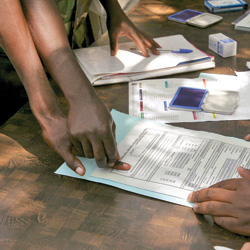
This was in part an effort to gain power, but there were also tactics to keep the peace talks going indefinitely, for financial gain. “Burundian representatives were flown to the city of Arusha in Tanzania for talks, and paid per diem rates.” There is a well-to-do neighbourhood in Burundi’s capital city nicknamed ‘Arushaville’, which is said to be built on the earnings of these protracted negotiations.
While the peace negotiations meant one thing for international and regional mediators and donors, they were viewed in different ways by Burundians. In fact, the very language of the international donor community can be coopted and reinterpreted for local gain.
For instance, networks of traditional elders, called the Bashingantahe, were considered a thorn in the side of the current regime in Burundi. “The regime implemented a ‘democratic decentralisation’ programme – something designed to appeal to donors – which established an elected government at the local level. It led to fierce competition between these newly elected local officials and the Bashingantahe elders, so the elders formed their own ‘NGO’ to appeal to international donors and to be able to attend donor-financed civil society forums.
“Everybody’s manoeuvering,” says Curtis. “These international ideas and labels are not imposed on a blank slate, but are forced to interact with existing political and economic agendas.
“I wanted to focus on Burundi partly because there are few strategic and economic considerations for the international donor community – so one would assume that they are going in with relatively unbiased good intentions. Yet, even in this case, peacebuilding programmes do not bring about their intended effects. What does this mean for the even more ‘difficult’ cases such as the Democratic Republic of the Congo or Somalia?”
With funding from the British Academy, Curtis recently co-edited a book on peacebuilding ideas in different African contexts. She continues to consult with and advise the peacebuilding commission at the UN and the UK’s Foreign and International Development offices on a number of issues related to African peace and security.
Recently, in discussion with a network of African scholars, she has turned her attention to possible new approaches and ideas of peacebuilding: “International packages for peace tend to focus first and foremost on stability and electoral democracy, both of which are important, but which don’t affect the entrenched self-interest of ruling elites.
“Questions of social justice and equality are expected to come later – but what if it was flipped so they were prioritised? There are very few success stories in international peacebuilding, and I’m concerned we’re in danger of learning the wrong lessons: that peace is too problematic, and that we should focus on narrower goals of counter-insurgency.
“I’d like to try and shift the debate towards questions of social justice and international solidarity. If we changed the notion of what is important in peacebuilding, I wonder what peace might look like then?”
Inset images: Voluntary disarmament and demobilisation of combatants as part of the UN Operation in Burundi in 2004-2005; credit: United Nations Photo.
To keep up to date with the latest stories about Cambridge’s engagement with Africa, follow #CamAfrica on Twitter.
Centre of African Studies
For half-a-century, the Centre of African Studies has served as the hub of research in the humanities and social sciences at the University of Cambridge. Collaboration with research institutes and individual researchers in Africa has long been key to its work, from its founding director Audrey Richards’s contribution to the establishment of social sciences in Uganda to a range of more recent forms of collaboration. In a scheme that is unique to Cambridge among African Studies Centres in the UK, the Centre hosts each year visiting research fellows from Africa, who spend six months in Cambridge unencumbered by duties in their home institutions.
Although the Centre does not have permanent academic staff, at present it hosts postdoctoral researchers whose interests range from heritage in Southern Africa to religion and popular culture in Rwanda. The Centre also monitors the provision of Africa-related teaching and research across the University. Cambridge’s well-established strengths in history and social anthropology have recently been complemented by growth in African politics – in both student demand and staff numbers.
The Centre has the only specialist African Studies library in Cambridge. Its archival collections are also significant. Academics across faculties and schools take part in teaching the interdisciplinary MPhil in African Studies. The Centre also hosts weekly research seminars and organises academic conferences in Cambridge and Africa. Some of the outcomes of these activities are published in its book series with Ohio University Press, a leading publisher in African Studies.

The text in this work is licensed under a Creative Commons Attribution 4.0 International License. For image use please see separate credits above.

